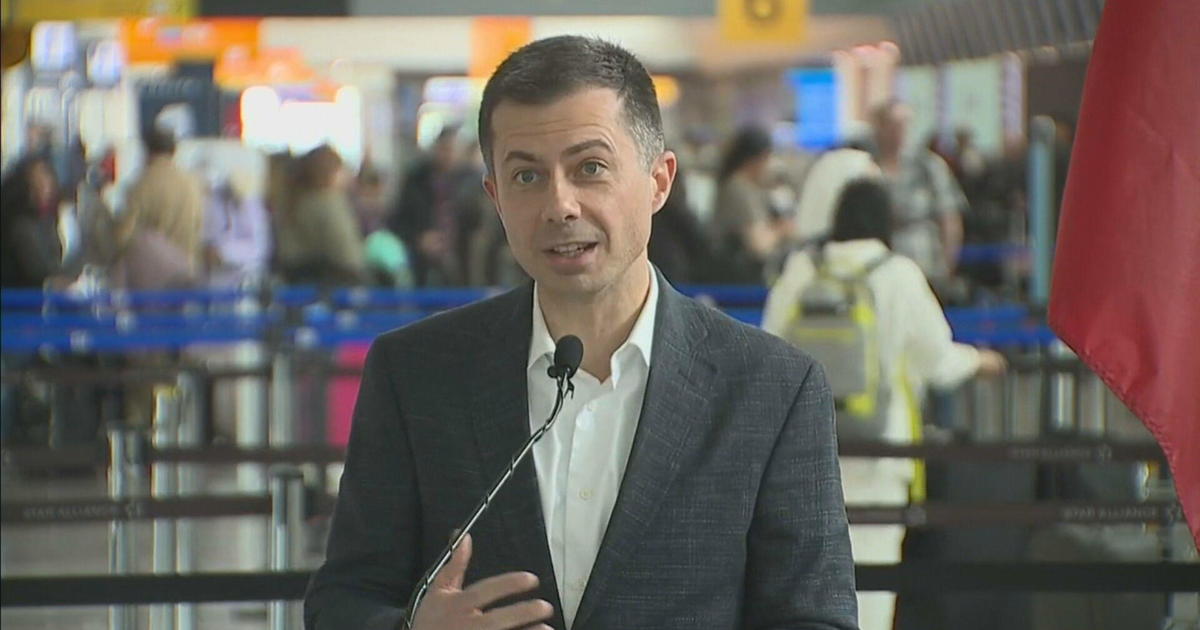As Wildfires Rage, Modern Tanker Planes Sought
CHEYENNE, Wyo. (AP) - The government is bolstering the nation's rundown aerial firefighting fleet by taking steps to add seven large tanker planes. But the aircraft likely won't be available soon and several other firefighting planes are grounded as destructive wildfires rage in Colorado and New Mexico.
President Barack Obama signed a bill Wednesday hastening the addition of those aircraft at a cost of $24 million. The same day, two firefighting C-130 military transport planes sat on a tarmac in Cheyenne, shrouded in an eye-watering haze from the High Park Fire just a 15-minute flight away.
In all, eight workhorse C-130s stand ready to fight destructive wildfires around the country - but all are grounded due to rules governing the use of the nation's aerial firefighting resources, and the new purchases probably won't be able to help firefighters for weeks, if not months.
"Getting into large, multiple wildfire scenarios, there's just not enough (aircraft) to go around in the current state," said Chuck Bushey, past president of the International Association of Wildland Fire, a professional association of people who fight wildfires.
Obama signed the bill at the urging of Colorado's congressional delegation, which was quick to praise the move.
Three planes are supposed to be ready by mid-August: Two BAe-146s from Missoula, Mont.-based Neptune Aviation Services, Inc., and one BAe-146 from Minden, Nev.-based Minden Air Corp. The BAe-146s are jet-powered.
The three will bring the Forest Service fleet to 20 large tanker planes - a figure that includes the lease of eight planes on Monday from the state of California, the Canadian Interagency Fire Centre, and a private DC-10 based in California. Another 11 tankers, including the C-130s, can be called into service.
"This is a major milestone in our efforts to modernize the large air tanker fleet," Forest Service Chief Tom Tidwell said in a release about the President's bill signing.
Still, the eight Air National Guard C-130 cargo planes fitted to drop slurry sit in Wyoming, Colorado, California and North Carolina. The Forest Service says it may request the eight planes only when all private tanker planes already are fighting fires or are unavailable for use. The C-130 crews insist they're ready to roll on 48 hours' notice.
"We have no limiting factors in terms of personnel or equipment to respond," said Deidre Forster, spokeswoman for the Wyoming National Guard.
The C-130 has long been a staple of the nation's military, carrying troops, equipment and disaster relief worldwide. It is praised for its agility and durability.
Starting in the 1970s, C-130s were fitted with Modular Airborne Fire Fighting Systems - devices that carry 3,000 gallons of fire-retardant slurry that can be dropped in 5 seconds while a C-130 swoops as low as 150 feet above the ground. The new planes authorized by Obama can carry 3,000 gallons of slurry.
Last year, the C-130s flew wildfire missions in Arizona, New Mexico, Texas, Oregon and Mexico. Wyoming's MAFFS have been deployed as far away as Indonesia, in 1997, and most recently in Texas and Oregon last September.
But the Wyoming MAFFS just can't fly from Cheyenne, where the Wyoming Air National Guard is based. The airport is not among those designated as official staging area for attacking wildfires __ and it lacks built-in infrastructure for reloading planes with retardant.
The MAFFS units are installed on the planes when they're called into duty and can be removed to free up the planes for other uses.
The Forest Service, meanwhile, says it has all the air power it needs to work on northern Colorado's 78-square-mile High Park Fire.
The cost of the MAFFS varies depending on how much they're used - anywhere from less than $2 million per year to almost $10 million over last year's busy fire season.
With drought and what has become a yearlong wildfire season, some experts insist as many as 50 planes, large and small, are needed nationwide, said Bill Gabbert, a wildfire blogger, veteran firefighter and owner of the Wildfiretoday.com website.
"You need to have air tankers responding within 25 or 30 minutes to new fires so they can slow them down quickly so that firefighters on the ground can put them out," Gabbert said. "But we no longer have that capability. So initial attack by aerial resources is a quaint memory."
The result: More small fires that become mega-fires and are far more expensive to fight than if they'd been snuffed out early, he said.
"Sure, it's expensive to contract for air tankers. But it's more expensive to pay the tens of millions of dollars when a few of those fires become very large," Gabbert said.
Tragedy got the U.S. tanker plane fleet to its current state.
The fleet numbered 44 planes a decade ago. A series of high-profile crashes, including wings that fell off a privately-owned C-130 and a 1940s-era PB4Y-2 Privateer in midflight, caused the Forest Service to ground 33 air tankers in 2004.
The Lockheed P2Vs, with eight still in the firefighting fleet, also have a history of fatalities. A P2V crashed in Utah last week, killing two pilots. Since 1990, the Cold War-era submarine attack planes have crashed at least seven times, killing 16.
Across the West:
- Arizona: A 480-acre wildfire near the Grand Canyon was 90 percent contained. A 2,860-acre fire and a 200-acre fire near Superior east of Phoenix were 50 percent contained.
- Colorado: The 81-square-mile High Park Fire west of Fort Collins was 15 percent contained. Gov. John Hickenlooper banned open burning and private use of fireworks. Authorities determined that six small wildfires near the Breckenridge Nordic Ski Center were intentionally set.
- New Mexico: The Little Bear fire, which has scorched 59 square miles and destroyed at least 224 homes in the Sierra Blanca range near Ruidoso, has been 45 percent contained but firefighting officials expressed concern about continued dry and sunny conditions.
- Washington: A wildfire burned about 1,500 acres of sagebrush and grass between Othello and Royal City in south-central Washington.
CORRECTION: An earlier version of this story stated that the slurry capacity of seven tanker planes is 2,400 gallons, which is incorrect.
(© Copyright 2012 The Associated Press. All Rights Reserved. This material may not be published, broadcast, rewritten or redistributed.)



